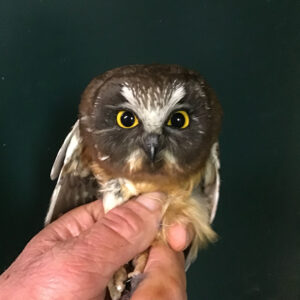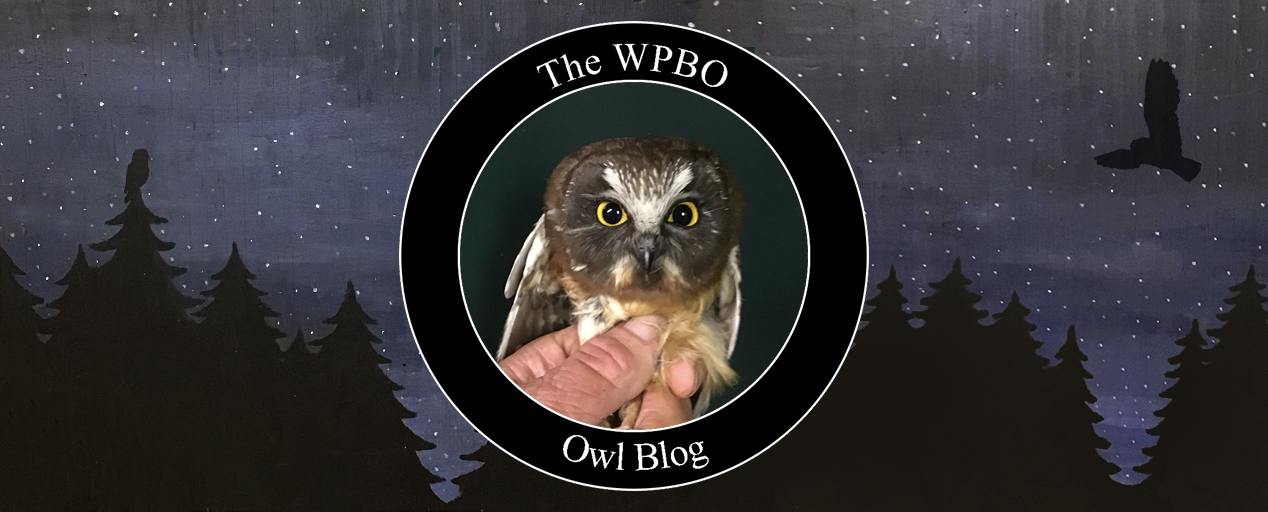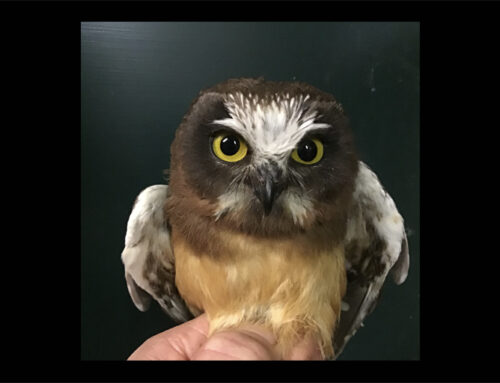Things have remained slow but steady over the past week. We only caught one bird on July 19, then got skunked the next night. Since then, each of the last five nights has produced three juvenile Northern Saw-whet Owls (NSWO) with a few adults and a few Long-eared Owls (LEOW) mixed in here and there. Throughout the summer season, juvenile NSWO begin to molt into their adult plumage. Compared to previous years, the juveniles are way behind what we have seen in previous years regarding this molt. This molt almost always starts with the feathers along the ear flap, they are solid brown in juveniles, and adult feathers have white spots on them. By this time, those adult feathers should be visible on most birds without using our fingers to spread the feathers to find them just starting to grow in. By this time, we also typically see the start of the facial discs growing in adult feathers. We should also be seeing a few birds growing in their adult breast and belly feathers. A bird we banded last night (pictured below) is the only one that has shown the adult ear flap feathers this well, which is still less than usual, and only the second to have a few adult facial disc feathers grown in. The juveniles have not had great fat stores this summer, but they’ve been good, so it does not seem likely that poor nutrition is delaying their feather replacement. It’s likely simply an indication of a later-than-usual breeding season.

A juvenile Northern Saw-whet Owl beginning to show its adult earflap and facial disc feathers. Photo by Chris Neri
Every year at this time, I think of the day I found the roosting owls on July 21, 2006, that led to the summer research and the bookshelves at the WPBO staff house — yes, the bookshelves. WPBO has a nice collection of many different ornithological references, including decades worth of some of the best ornithological journals that are regularly a great resource for the field staff. The problem was that they were in various boxes shoved into corners around the staff house. The problem was anytime field staff found a citation that led them to seek out a particular issue of one of those journals, it could take a long time to root through the boxes to find it. In 2006 Nova Mackentley and I contacted the WPBO board asking if anyone had any old bookcases they might want to send our way. Former WPBO board member Lathe Claflin did much better. He contacted a friend who was a carpenter, and they offered to make custom bookshelves to fill the available wall space and accommodate the journals.
The connection of the bookshelves to this time of year and the summer owl banding is that it just so happened that the planned installation of the bookshelves was for July 22, 2006, the day after I found those roosting owls. I had just gotten permission from the WPBO research committee to start an exploratory summer owl banding season that had to wait a couple of days despite my desperate desire to start immediately. Obviously, it all worked out, and I love the fact that even counters in their early 20s still inevitably find themselves digging into those resources and tell me how cool it is that WPBO has all those journals. It was a fun week, with Lathe and his friend providing WPBO with those bookshelves that contain materials that provide a valuable resource to the field staff and the discovery of the summer owl banding that I still look back on fondly 17 years later.

Part of the field house bookcase that so many of the WPBO field staff have spent hours sitting in front of.
Season Totals of Banded Owls
Northern Saw-whet Owls: 92 (33 juveniles & 59 adults)
Long-eared Owls: 11
Total owls banded: 103
Season Totals of Recaptured Owls
Northern Saw-whet Owls: 2
~ Chris Neri & Jess Cosentino
2023 Summer Owl Banders
You can read the owl banders’ weekly blog posts and follow WPBO’s social media (Facebook, Instagram, and Twitter) for owl banding highlights this season.
Owl Banding Presentations — Visitors may observe owls that have been banded on Friday and Saturday evenings from dusk until midnight. Please note that banding is weather dependent and it is at the banders’ discretion to cancel banding accordingly. Observation will be limited to outdoors only. For the safety of the owls, flash photography and recording video is prohibited.




